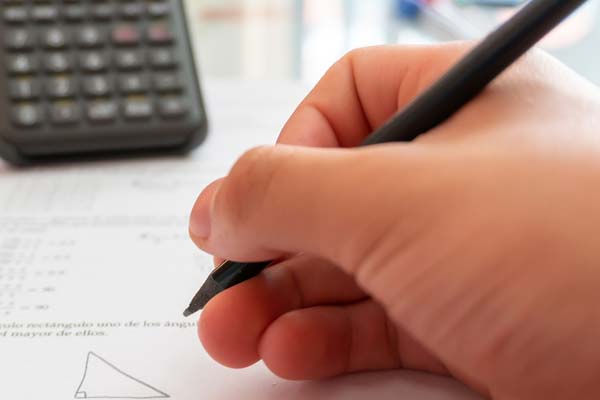A-Level Maths Calculator: Everything You Need to Know
A-Level Maths is an advanced-level course designed to give students an in-depth understanding of mathematical concepts and topics. The syllabus covers many topics, including equations, functions, inequalities, quadratic equations, linear equations, differentiation, integration, ratio, mean, mode, and more.
The course is designed to challenge students and requires a high level of mathematical ability. A-level maths is a prerequisite for many university courses, particularly science, engineering, and mathematics.
To succeed in A-level maths, students must have a strong foundation in mathematical concepts and be comfortable with advanced mathematical topics. The course requires a lot of practice, and students are expected to work independently and develop their problem-solving skills.
One of the critical tools that students will use throughout the course is the calculator. The calculator is an essential tool for solving complex equations and functions, and students are expected to be proficient in using it.
Many different calculators are available, but the Casio FX-CG50 is widely regarded as the best calculator for A-Level Maths and A-Level Further Maths. It provides all the functionality that students need and is easy to use.
In addition to using the calculator, students will also need to have a good understanding of mathematical concepts and be able to apply them in real-world situations. The course is designed to give students a strong mathematical theory foundation and develop problem-solving skills.
The Role of Calculators in A-Level Maths
Calculators play a significant role in A-Level Maths. They are essential tools that help students perform complex calculations, solve equations, and plot graphs. However, it is necessary to note that there are some basic calculator restrictions in A-level maths exams.
Calculators cannot have symbolic algebraic manipulation capabilities, meaning they cannot be used to simplify expressions or equations. Students are also not allowed to use calculators to solve equations. Instead, they are required to show their work and solve equations manually.
Despite the limitations, calculators remain valuable tools in A-level maths for their ability to swiftly and accurately handle calculations, particularly when tackling sizable numbers or intricate equations.
Graph plotting is another critical feature of calculators in A-level maths. Students can use their calculators to plot graphs of functions and equations, which can help them visualize and understand mathematical concepts better.
Advanced table creation is also possible with calculators, which can help students organize data and perform calculations more efficiently. Precise diagrams can also be created using calculators, which are helpful when dealing with geometrical concepts such as trigonometry.
🌟 Hey Students! 🚀 Ready for the ultimate experience? Join us on Studentsinside.com's Facebook, YouTube, WhatsApp, and LinkedIn. Click now for tips, fun, and success vibes! 🌈✨ #StudentLife #JoinUs
Types of Calculators for A-Level Maths
When selecting a calculator for A-level Maths, there are two main types: scientific and graphical. Both types have advantages and disadvantages, and the choice often comes down to personal preference and the specific requirements of the curriculum.
Scientific Calculators
Scientific calculators are the most common type of calculator used in A-level Maths. They are designed to perform various mathematical functions, including trigonometry, logarithms, and complex numbers. They are also typically less expensive than graphical calculators.
One popular scientific calculator for A-level Maths is the Casio fx-83GT. It is approved for use in most A-level exams and has various features, including a large display, 260 functions, and solar power.
Graphical Calculators
Graphical calculators are more powerful than scientific calculators and can perform more complex calculations, including graphing functions and solving equations. They are also more expensive than scientific calculators and may only be approved for use in some A-level exams.
One popular graphical calculator for A-level Maths is the Casio fx-CG50. It has a large color display, 3D graphing capabilities, and advanced features. It is approved for use in most A-level exams, including those that allow graphical calculators.
Other popular graphical calculators for A-level Maths include the TI-84 and the TI-Nspire CX II-T.
Choosing the Right Calculator
When it comes to A-level Maths, choosing the right calculator can significantly affect your exam performance. Here are some factors to consider when selecting a calculator:
Acceptability
The first thing to check is whether the calculator is allowed in your exams. Check with your syllabus and the list of approved calculators to ensure you are not breaking any rules.
Learning and Ease of Use
The calculator should be easy to use and understand. It should have a user-friendly interface and be intuitive to operate. A calculator with a natural display feature can also be helpful as it allows for easier input and output of mathematical expressions.
Portability and Design
When choosing a calculator, it’s crucial to prioritize portability. Opt for a lightweight and compact design that can easily accompany you to school or college without occupying excessive space in your bag.
Silent Operation
A calculator that operates silently is ideal for exams, where noise can distract you and others around you. Opt for a calculator that has soft-touch keys and does not produce any clicking sounds when you press the buttons.
Sufficiently Advanced Technology
The calculator should be sufficiently advanced to handle complex mathematical calculations. It should have features like graphing, statistical analysis, and programming capabilities. A solar panel is also a plus, as it can help you save on battery costs.
Calculator Applications and Software
There are various applications and software available that can be used to aid A-level Mathematics students in their studies. These tools can help students solve complex equations, visualize data, and understand mathematical concepts.
Mobile Apps
Numerous mobile applications available for Android and iOS devices can assist students in their studies. Some of the popular ones include:
- Microsoft Math Solver: This app allows students to type in math problems and get step-by-step solutions. It also has a graphing feature that can be used to plot functions and equations.
- Photomath: This app lets students snap a photo of a math problem and receive a step-by-step solution. Additionally, it offers a graphing function for plotting functions and equations.
Web-based Tools
There are various web-based tools available that can be accessed through a browser. Some of the popular ones include:
- Symbolab: This website offers step-by-step solutions to math problems, including word problems. It also has a graphing feature that can be used to plot functions and equations.
- Desmos: This website offers a powerful graphing calculator that can be used to plot functions and equations. It also includes features for statistics and data analysis.
Spreadsheet Programs
Microsoft Excel and Google Sheets are versatile tools for A-level Mathematics studies. They enable the creation of data charts, facilitate statistical analysis, and assist in equation solving.
QR Code Generators
QR code generators enable the creation of QR codes linked to math problems or solutions. These QR codes can be easily printed for classroom use or shared among students.
Language Translators
Language translators can translate math problems or solutions into different languages. This can be helpful for students who need to be fluent in English.
Purchasing A-Level Maths Calculators
When purchasing an A-level Maths calculator, there are a few factors to consider. Here are some tips to help you make an informed decision:
Check Compatibility
First, ensure the calculator you choose aligns with the A-level Maths syllabus and is allowed by your exam board. Verify its compatibility with your teacher or exam board to ensure it’s approved.
Consider Affordability
A-level Maths calculators can vary significantly, with some models costing hundreds of pounds. However, there may be better options than an expensive calculator for everyone. Many affordable options still offer the necessary features for A-level Maths.
Look for Necessary Features
When choosing an A-level Math calculator, it’s crucial to prioritize the features that align best with your study needs. Some key features to look for include:
- Graphing capabilities
- Proficiency in solving mathematical equations and systems.
- Trigonometric functions
- Statistical functions
- Programmability
Recommended Options
Here are a few recommended options for A-level Maths calculators:
- Casio Scientific Calculator FX83GT – This is an affordable option permitted in most A-level Maths exams. It has all the necessary features for A-level Maths and is easy to use.
- Texas Instruments TI-84 Plus CE – This graphing calculator is a bit more expensive but offers advanced features such as 3D graphing and a full-color display. It is permitted in most A-level Maths exams.
- HP Prime G2 – This high-end graphing calculator is permitted in most A-level Maths exams. It offers advanced features such as a touch screen and a built-in CAS (Computer Algebra System). However, it is also one of the most expensive options available.
Preparing for A-Level Maths Exams
Preparing for A-Level Maths exams requires practice, confidence, and familiarity with the approved calculator. Here are some tips to help students prepare for their exams:
- Practice: A-level math exams need students to use their knowledge to solve challenging problems. Practicing past papers and sample questions regularly helps students improve at problem-solving and feel more confident.
- Confidence: Confidence is critical to performing well in A-level maths exams. Students should build confidence by practicing regularly, seeking help, and staying positive.
- Familiarity with the approved calculator: A-level maths exams allow the use of graphic calculators. Students should ensure they are familiar with the approved calculator and its functions. They should also practice using the calculator to solve problems and check their answers.
- Exam preparation: Students should ensure they are familiar with the exam format, including the number of questions, time limits, and mark schemes. They should also practice time management to complete the exam within the allotted time.








